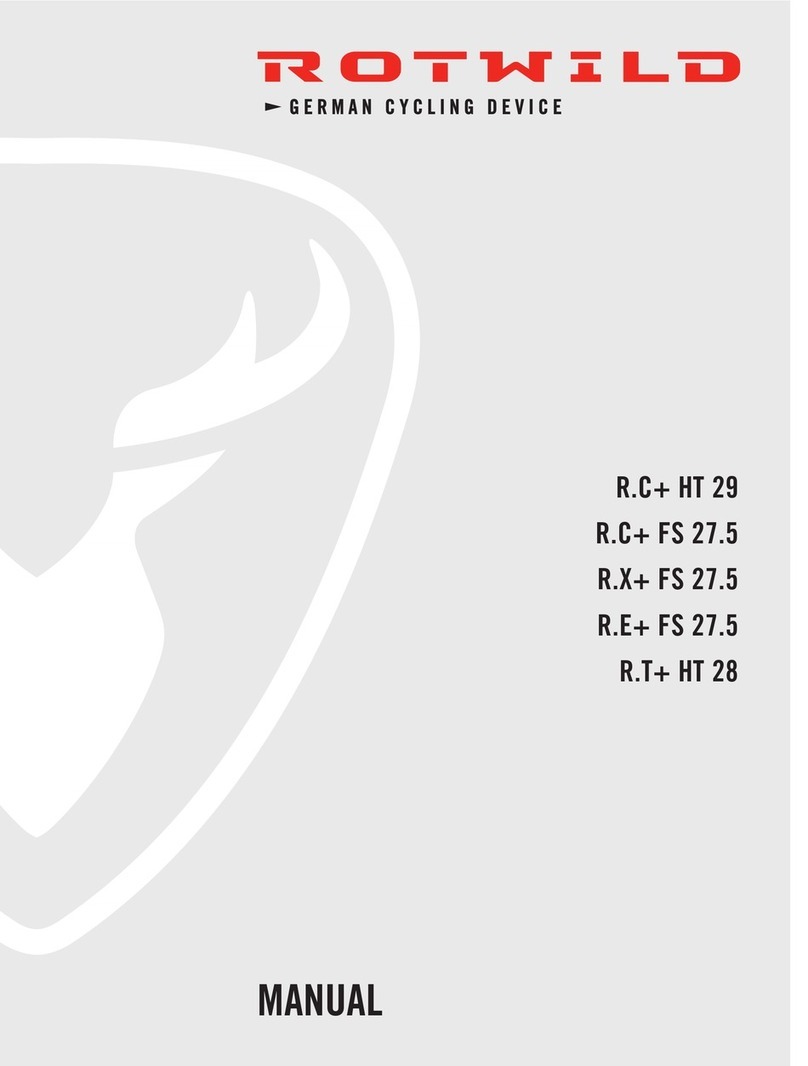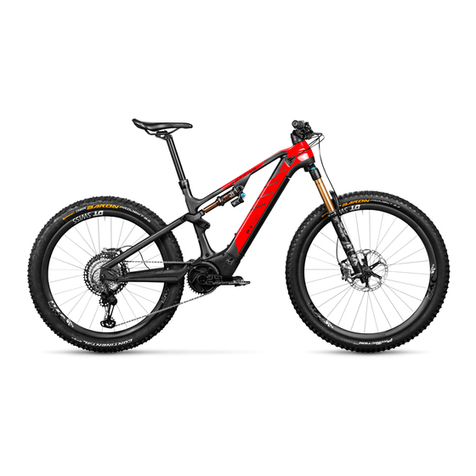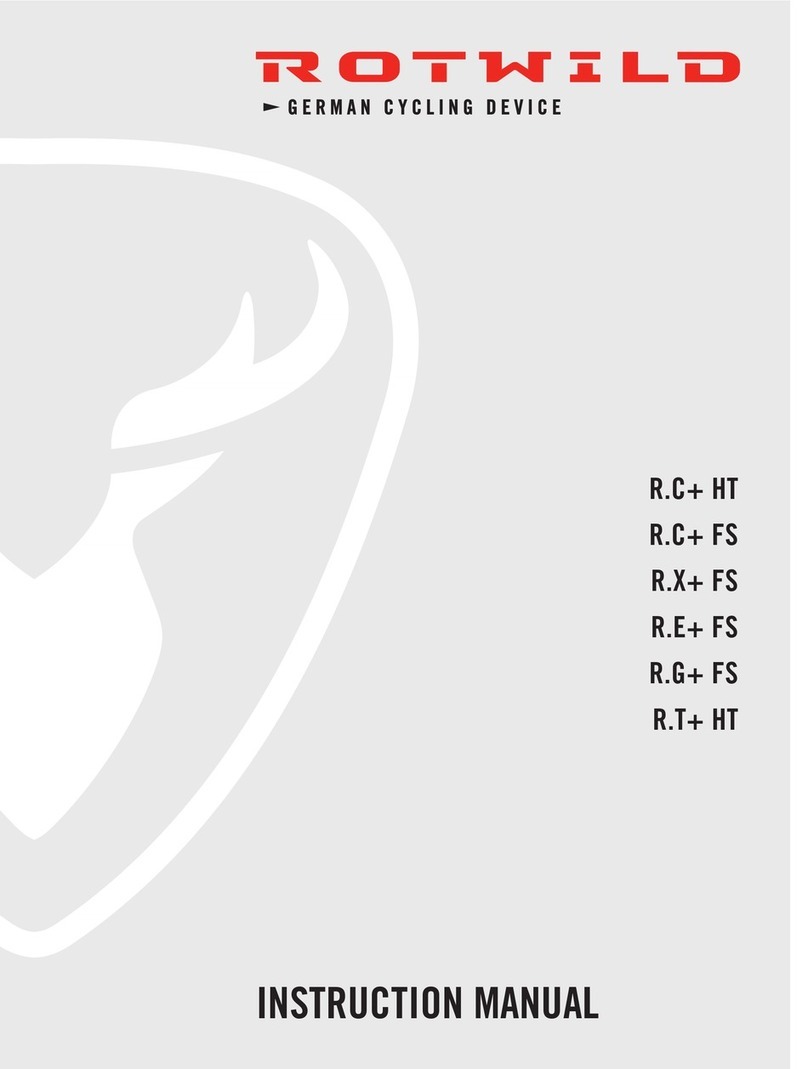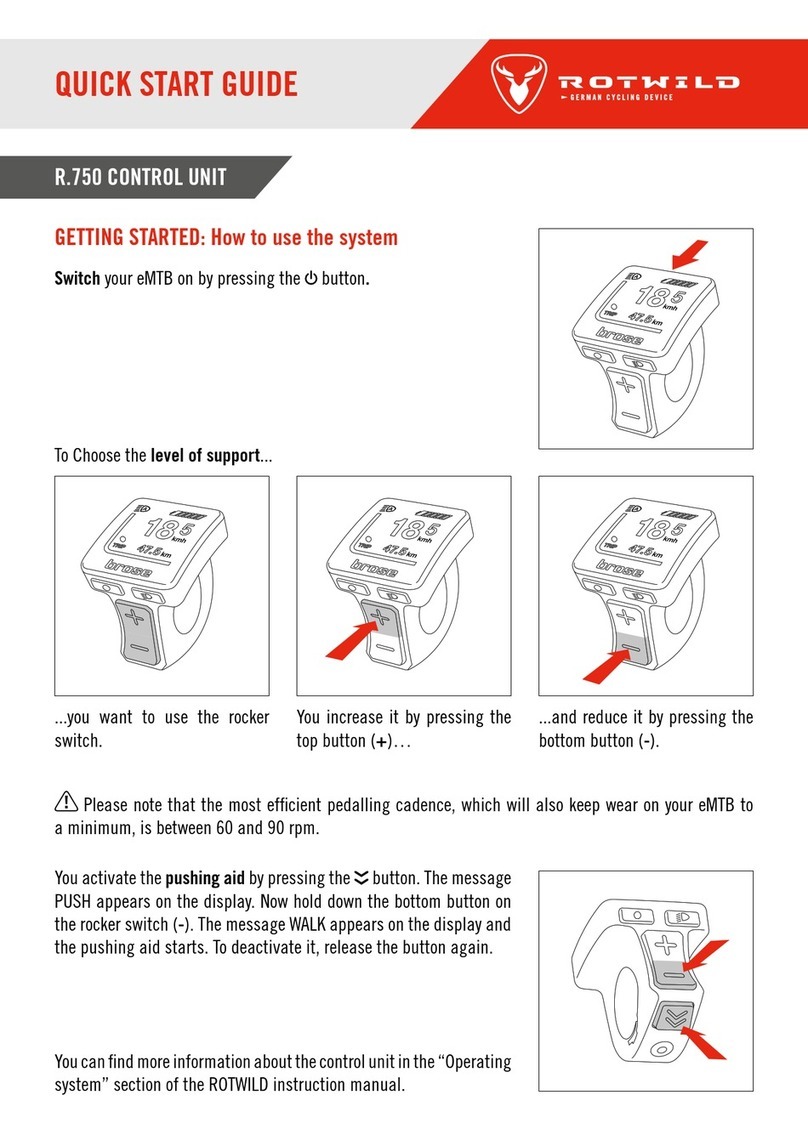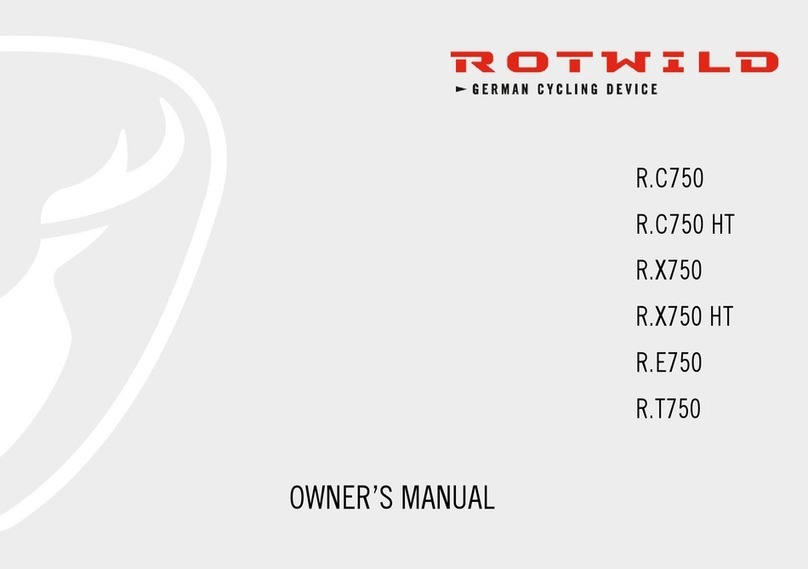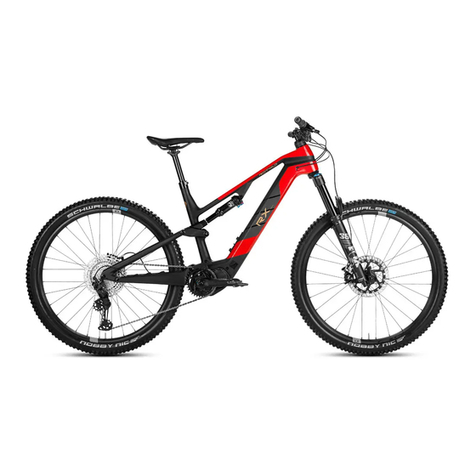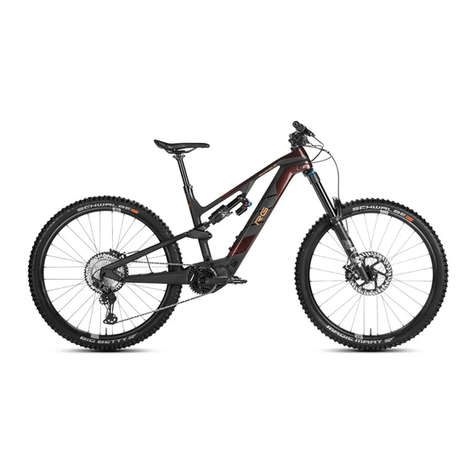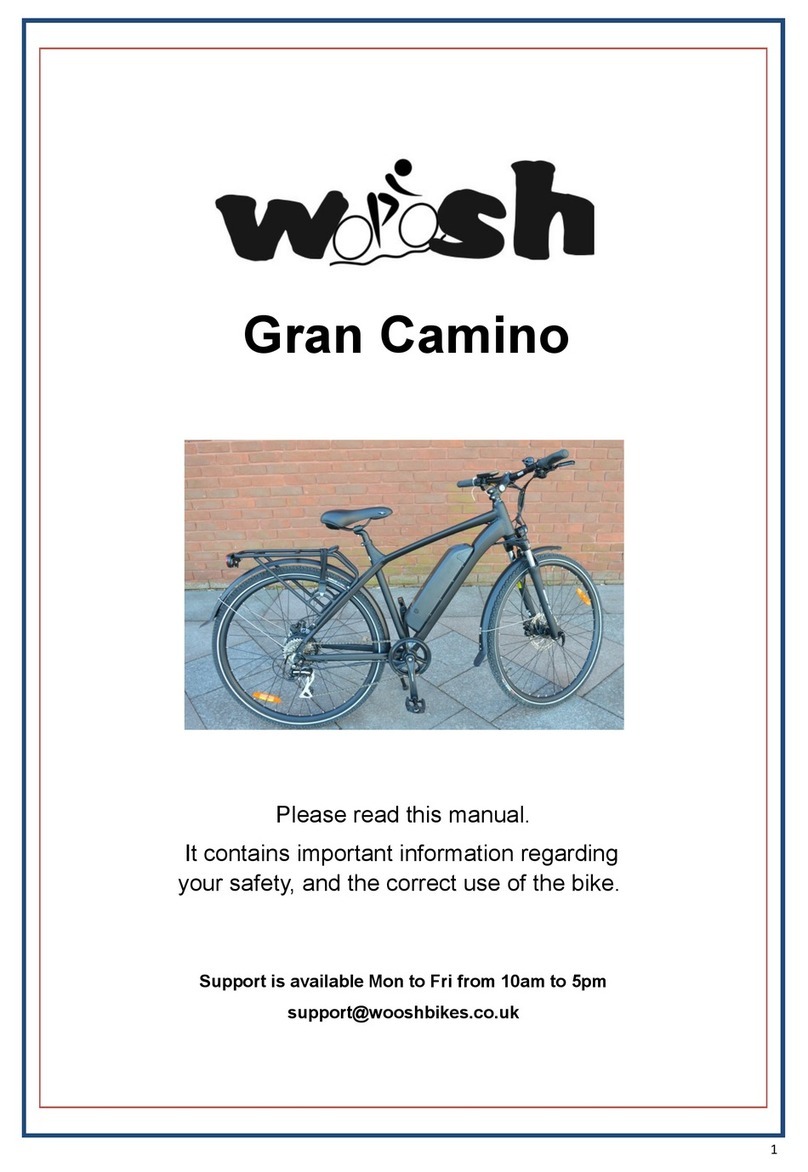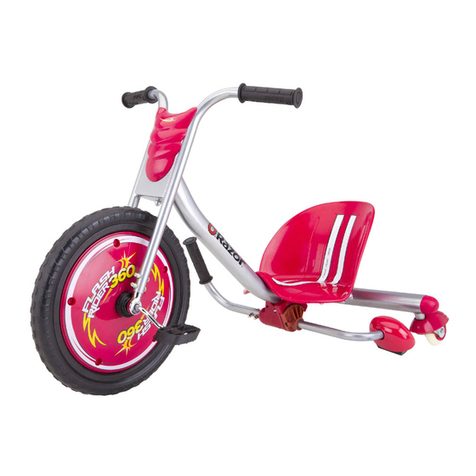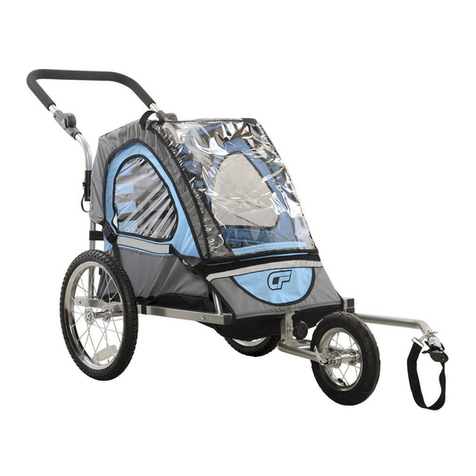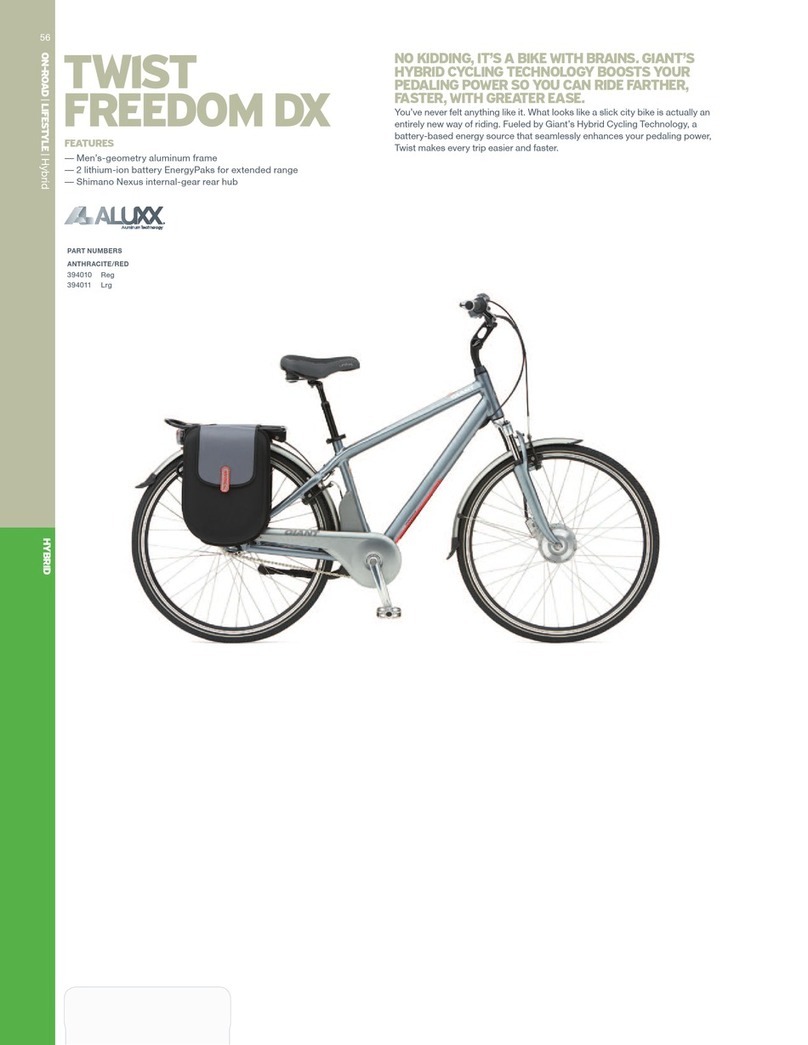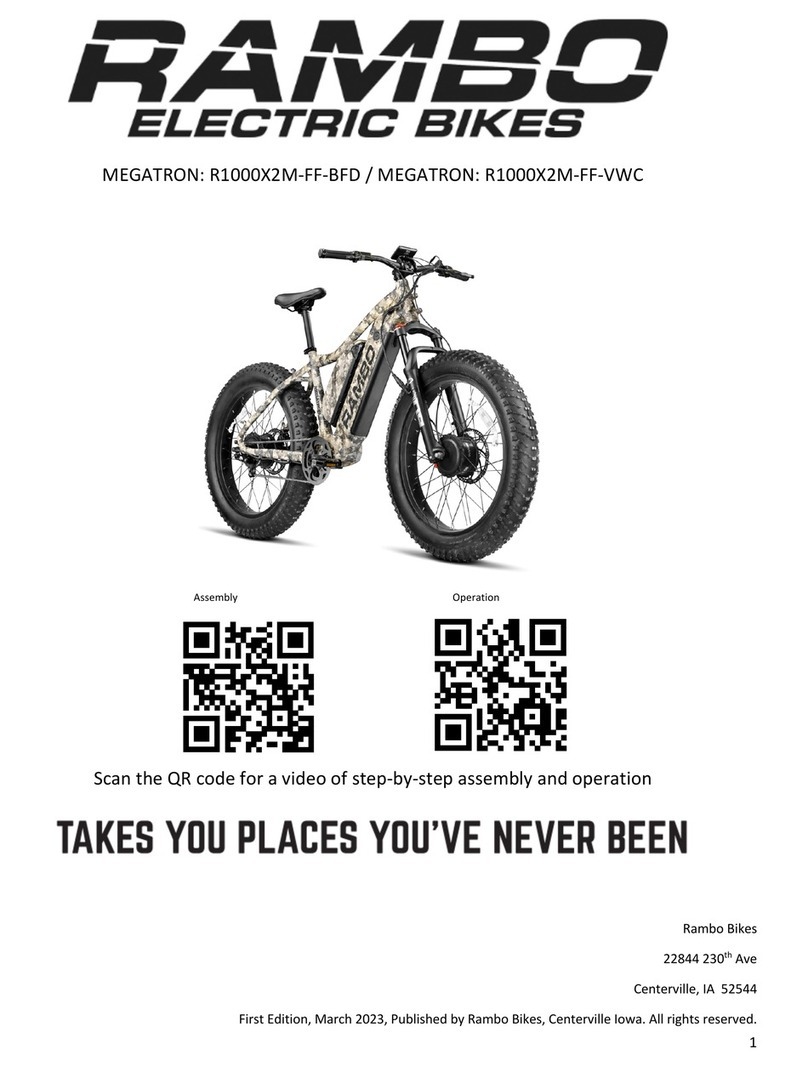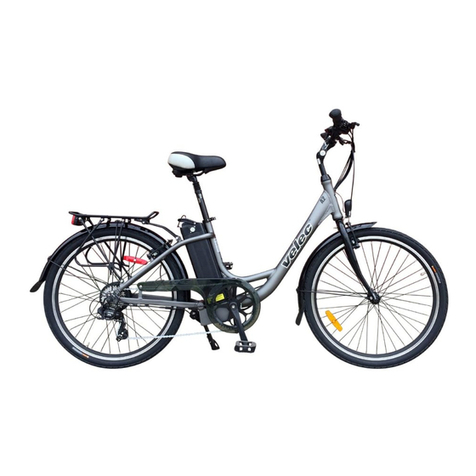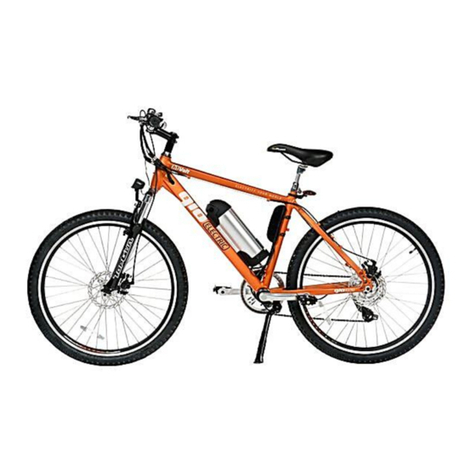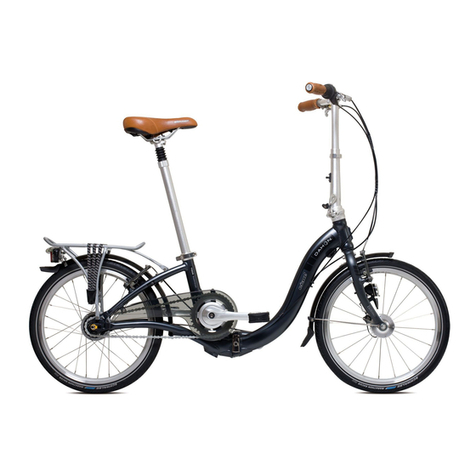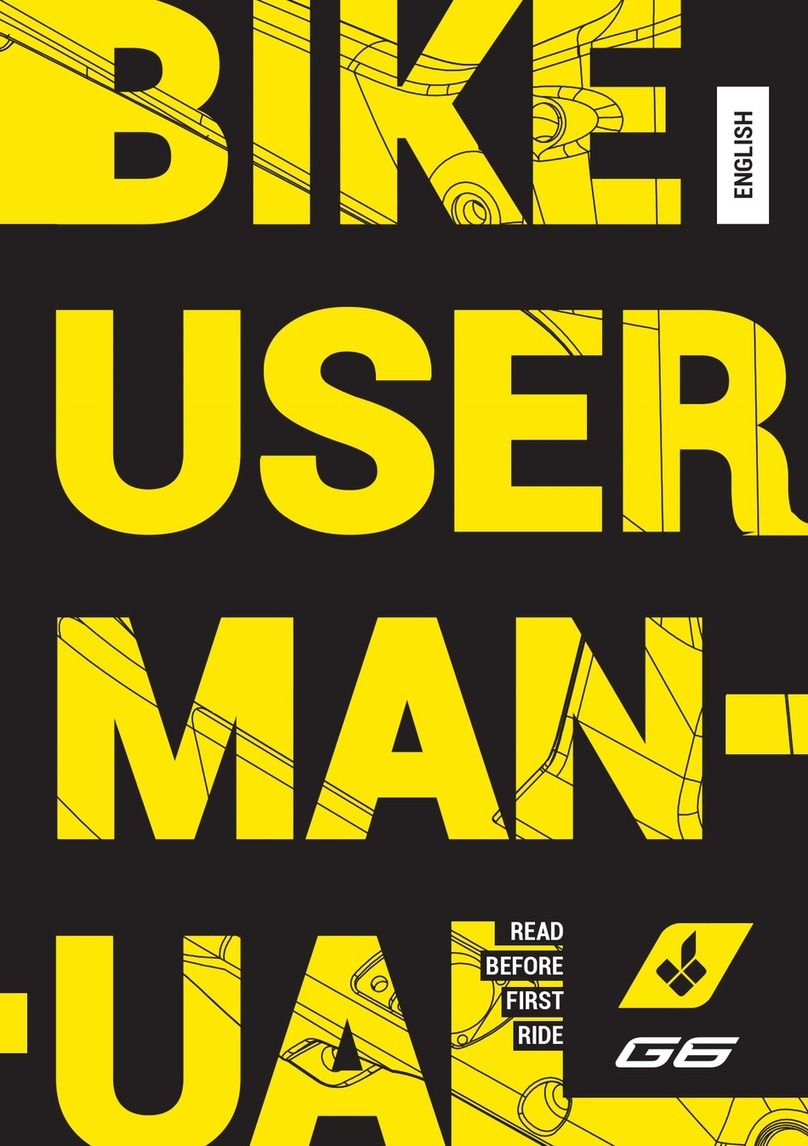
2
5.1 Work environment 30
5.2 Transport and storage 30
5.3 Items supplied 31
5.4 Packaging 31
5.5 Set-up 31
6 Making the bike ready to ride 33
6.1 Adjusting the handlebars 33
6.2 Adjusting the saddle 33
6.3 Using the quick release lever and quick release axle bolt 34
6.3.1 Seat post’s quick release lever 34
6.3.2 Wheels: Using the RWS system 36
6.3.3 Assembling the axle bolt on the front wheel 38
6.3.4 Assembling the axle bolt on the back wheel 39
6.3.5 Assembling the axle bolt on the back wheel with MDI 3 drop-outs 40
6.4 Adjusting the gear cables 42
6.5 Adjusting the brakes 43
6.5.1 Brake pad wear 43
6.5.2 Grip width 43
6.6 Adjusting the suspension 44
6.6.1 Adjusting the suspension fork 44
6.6.1.1 Suspension stiffness 44
6.6.1.2 Adjusting the pressure rating 46
6.6.1.3 Adjusting the rebound damping 47
6.6.2 Adjusting the shock absorber 48
6.6.2.1 Suspension stiffness 48
6.6.2.2 Adjusting the pressure rating 50
6.6.2.3 Adjusting the rebound damping 51
6.7 Additional components 52
6.8 Storage and protection 52
7 Operation 54
7.1 General 55
7.2 Kick stands 55
7.3 Total permitted weight 55
7.4 Luggage carriers 56
7.5 Function of the gears 56
7.6 Lowering the saddle 56
7.7 Electric drive system 57
7.7.1 Standard display operating system + remote 58
7.7.1.1 Display 59
7.7.1.2 Control panel on the handlebars 60
7.7.1.3 Turning the drive system on and off 60
7.7.1.4 Lighting 61
7.7.1.5 Level of support 61
7.7.1.6 Pushing aid 62
7.7.1.7 Display screen 62

